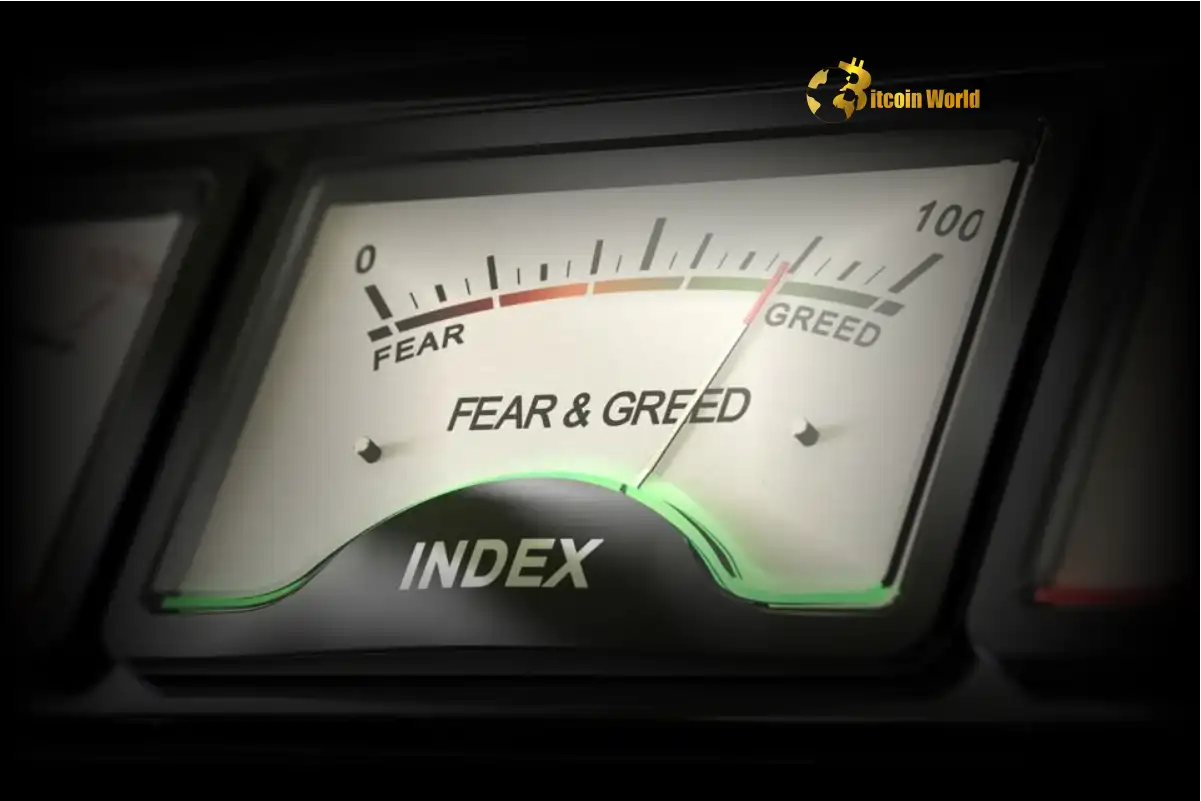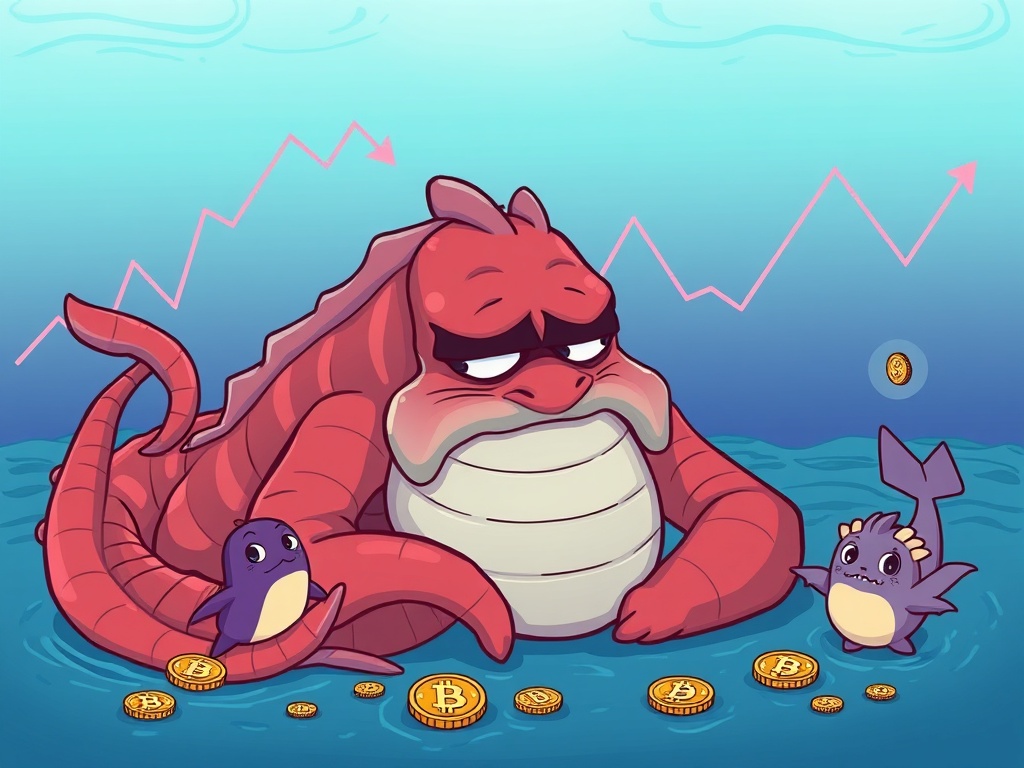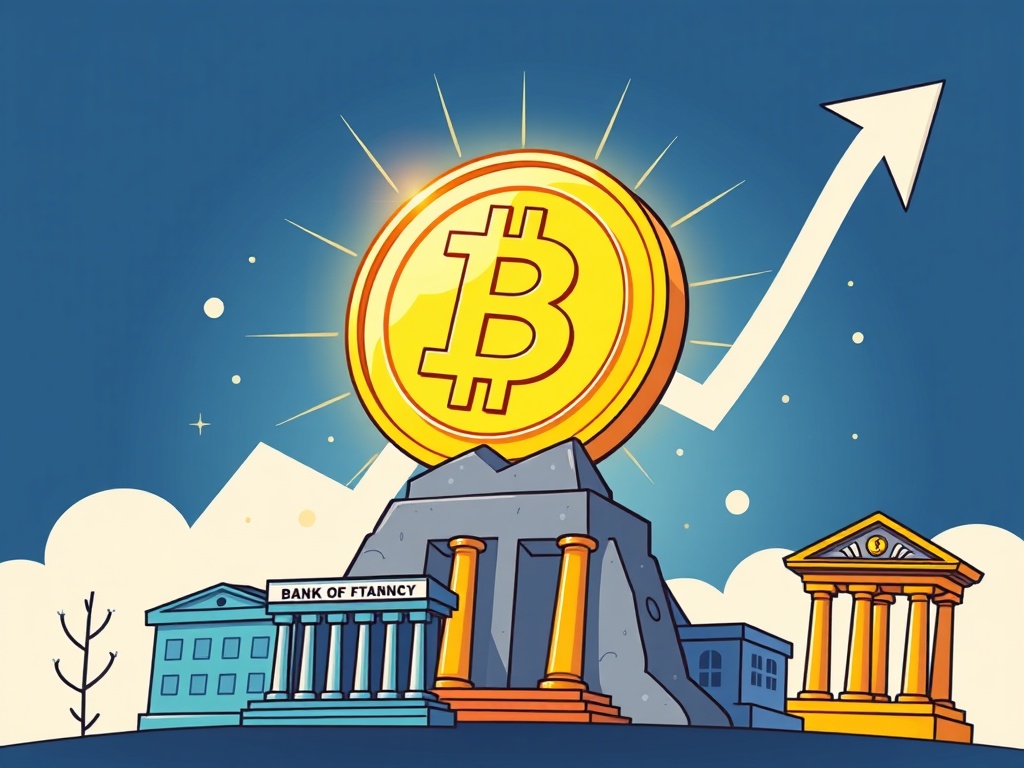BitcoinWorld

Crypto Fear and Greed Index: Crucial Insights as Market Stays in ‘Greed’ Zone
Hey there, fellow crypto enthusiasts! Ever feel like the crypto market is a rollercoaster driven purely by emotion? Well, you’re not alone. Understanding the collective mood of the market is absolutely crucial, and that’s where the Crypto Fear and Greed Index comes in. This handy tool gives us a snapshot of whether market participants are feeling fearful and cautious, or overly greedy and potentially reckless.
As of May 21st, the index, provided by Alternative, registered a value of 70. While this is a slight dip of one point from the previous day’s 71, it firmly keeps the market squarely within the ‘Greed’ territory. But what exactly does a reading of 70 mean, and why should you care about this specific metric?
Understanding the Crypto Fear and Greed Index
So, what exactly is this index and why is it so talked about? At its core, the Crypto Fear and Greed Index is designed to measure the prevailing sentiment in the cryptocurrency market. Think of it as a barometer for the collective psychology of crypto investors.
The index operates on a simple scale from 0 to 100:
- 0: Extreme Fear – Indicates significant panic and potential undervaluation.
- 25: Fear – Suggests market anxiety and caution.
- 50: Neutral – Represents a balanced market sentiment, neither overly fearful nor greedy.
- 75: Greed – Points to growing optimism and potential overvaluation.
- 100: Extreme Greed – Signals irrational exuberance and potential market bubble conditions.
The theory behind the index is rooted in contrarian investing principles. Extreme fear can often present buying opportunities, as panic selling might drive prices below their intrinsic value. Conversely, extreme greed can signal a market top, where assets might be overbought and due for a correction.
How is the Bitcoin Fear and Greed Index Calculated? Unpacking the Factors
While often referred to broadly as the Crypto Fear and Greed Index, it’s heavily influenced by Bitcoin data, which is why you often hear it called the Bitcoin Fear and Greed Index. The index isn’t just pulled out of thin air; it’s a weighted average of several key market indicators. Understanding these components helps shed light on why the index moves the way it does. Here’s a breakdown of the factors Alternative considers and their respective weightings:
- Volatility (25%): This measures the current volatility and maximum drawdowns of Bitcoin compared to average historical values. High volatility, especially significant price drops, can indicate fear.
- Market Momentum/Volume (25%): This compares the current volume and market momentum (like positive price action) to historical averages. High trading volumes in a positive market often signal greed, while low volumes during downturns might indicate fear.
- Social Media (15%): This factor analyzes keywords related to Bitcoin and crypto on platforms like Twitter (now X). It looks at the volume of mentions and the sentiment of those mentions (positive vs. negative). A surge in positive, hyped-up mentions can contribute to a higher ‘Greed’ score.
- Surveys (15%): Although currently paused by Alternative, this factor previously incorporated weekly polls asking users about their market sentiment. While not currently active, it highlights the attempt to directly gauge public opinion.
- Bitcoin Dominance (10%): This measures Bitcoin’s share of the total cryptocurrency market capitalization. Increasing Bitcoin dominance can sometimes indicate fear, as investors might be selling altcoins to move into the perceived safety of Bitcoin. Conversely, decreasing dominance can signal greed, as investors take on more risk by moving into altcoins.
- Google Trends (10%): This analyzes search query data for terms related to Bitcoin and crypto on Google Trends. A sudden surge in searches for terms like “Bitcoin price manipulation” might indicate fear, while searches for “buy crypto now” could signal greed.
By combining these diverse data points, the index attempts to provide a more holistic view of the market’s emotional state than any single metric could offer alone.
What Does Being in the ‘Crypto Greed Zone’ (70) Actually Mean?
The index currently sits at 70, firmly in the ‘Greed’ zone. What are the implications of this reading? A score in the 60-79 range generally suggests that market participants are feeling optimistic, confident, and are actively buying. Prices may be rising, and there’s a general sense that the market will continue to go up.
Here’s what a 70 reading often implies:
- Positive Price Action: The market, particularly Bitcoin and major altcoins, has likely seen significant positive price movements recently.
- Increased Buying Pressure: More people are looking to buy than sell, driving prices higher.
- High Trading Volume: Significant amounts of capital are flowing into the market.
- Optimistic Social Sentiment: Discussions on social media are likely dominated by positive outlooks and price predictions.
- Potential for Overvaluation: While not a guarantee, a high greed score can suggest that assets might be trading above their fundamental value, driven more by speculation and FOMO (Fear Of Missing Out) than intrinsic worth.
The slight drop from 71 to 70 is minor and doesn’t necessarily signal a major shift. It could be attributed to very short-term fluctuations in price, volume, or social media sentiment, but the overarching mood remains one of ‘Greed’.
How Can the Crypto Fear & Greed Index Inform Your Crypto Investing Strategy?
This is where the rubber meets the road. How can you, as an investor, use the Crypto Fear and Greed Index? It’s important to stress that this index should not be your sole guide for making investment decisions. It’s a sentiment indicator, not a crystal ball predicting future price movements with certainty.
However, it can be a valuable tool when used as part of a broader Crypto Investing Strategy. Here are some ways to think about incorporating it:
- Contrarian Signal: Many investors use the index as a contrarian indicator. The famous quote often attributed to Warren Buffett, “Be fearful when others are greedy and greedy when others are fearful,” perfectly captures this approach. When the index is in ‘Extreme Fear’ (low numbers), it might be a good time to consider buying, assuming your fundamental analysis supports the asset’s value. When the index is in ‘Extreme Greed’ (high numbers), it might be a good time to consider taking some profits or being more cautious about new investments.
- Confirmation Tool: You can use the index to confirm signals from other forms of analysis. If your technical analysis suggests a potential market top and the index is showing ‘Extreme Greed’, it adds weight to the cautionary signal.
- Risk Management: A high ‘Greed’ reading can serve as a reminder to manage your risk. This might mean setting tighter stop-loss orders, reducing leverage, or diversifying your portfolio.
- Psychological Check: The index can help you recognize your own emotional state. If the index is high (Greed) and you feel an overwhelming urge to buy everything, it’s a good moment to pause and question if you’re being influenced by FOMO rather than rational analysis.
Currently, with the index at 70 (Greed), it suggests a time for caution rather than reckless buying. While the market could certainly continue to go up, the risk of a pullback increases as greed levels rise. It’s a time to evaluate your existing positions and be selective with any new capital you deploy.
Challenges and Limitations of Relying Solely on Market Sentiment
While insightful, the Crypto Fear and Greed Index has its limitations. It’s important to be aware of these so you don’t fall into the trap of relying on it too heavily:
- It’s Lagging, Not Leading: The index reacts to market movements and sentiment shifts; it doesn’t predict them with certainty. By the time the index hits ‘Extreme Greed’, a price peak might be imminent or already happening.
- Correlation vs. Causation: High greed often correlates with high prices, but the greed itself doesn’t *cause* the prices to stay high indefinitely. Other factors like adoption, regulation, and macroeconomic conditions play significant roles.
- Doesn’t Account for Fundamentals: The index tells you about the market’s mood, but nothing about the underlying technology, use case, or adoption of specific crypto projects. A fundamentally strong project might be a good buy even when the market is fearful, and a weak project might be a bad investment even when the market is greedy.
- Influenced by Bitcoin: As mentioned, the index is heavily weighted towards Bitcoin. While Bitcoin influences the overall market, altcoins can sometimes behave differently, driven by their own specific news or developments.
Therefore, always use the index in conjunction with technical analysis (chart patterns, support/resistance levels), fundamental analysis (project whitepapers, team, technology, adoption), and macroeconomic analysis (interest rates, inflation, global events).
What Factors Could Move the Index from the Crypto Greed Zone?
Moving forward, several factors could cause the index to shift from its current position in the Crypto Greed Zone. A significant positive catalyst, like a major regulatory approval, increased institutional adoption, or a sustained Bitcoin price surge, could push the index even higher towards ‘Extreme Greed’.
Conversely, negative news could quickly inject fear back into the market. Potential triggers include:
- Significant price crashes
- Negative regulatory announcements
- Major exchange hacks or failures
- Macroeconomic downturns
- Unexpected negative news specific to Bitcoin or other major cryptocurrencies
A rapid shift from Greed to Fear can happen very quickly in the volatile crypto market, highlighting the importance of staying informed and prepared.
Conclusion: Navigating the Market’s Mood
The Crypto Fear and Greed Index currently sitting at 70 is a clear signal that the market is feeling optimistic and is in a state of ‘Greed’. While this reflects recent positive price action and high market momentum, it also serves as a crucial reminder for investors to exercise caution.
The index is a valuable tool for gauging Crypto Market Sentiment and understanding the collective psychology driving price movements. By understanding how it’s calculated and what the different zones signify, you can use it to inform your Crypto Investing Strategy, perhaps adopting a more cautious approach when greed is high and looking for opportunities when fear is dominant.
Remember, no single indicator tells the whole story. Combine the insights from the Fear and Greed Index with thorough research and analysis to make informed decisions in this dynamic market. Stay vigilant, stay informed, and navigate the market’s emotions wisely!
To learn more about the latest crypto market trends, explore our articles on key developments shaping Bitcoin price action.
This post Crypto Fear and Greed Index: Crucial Insights as Market Stays in ‘Greed’ Zone first appeared on BitcoinWorld and is written by Editorial Team





